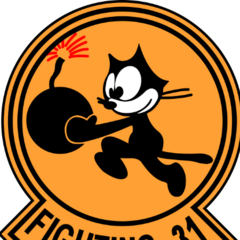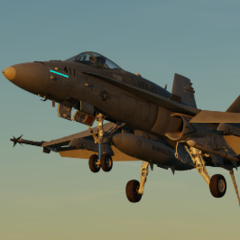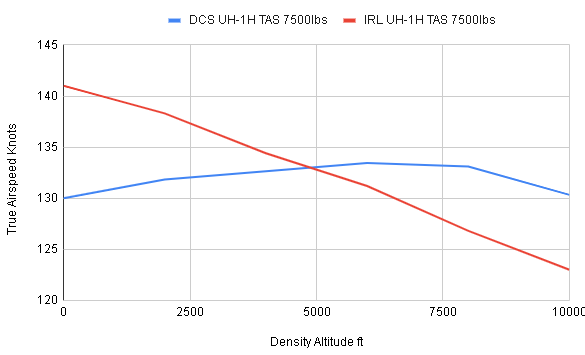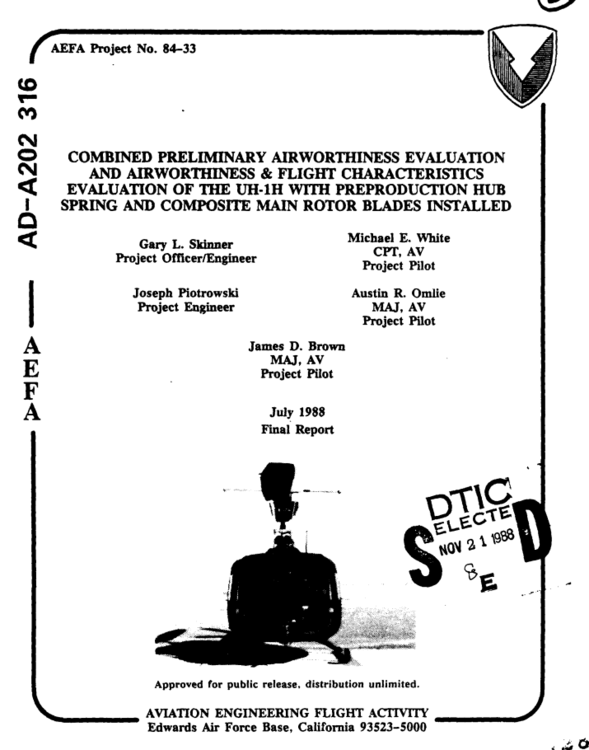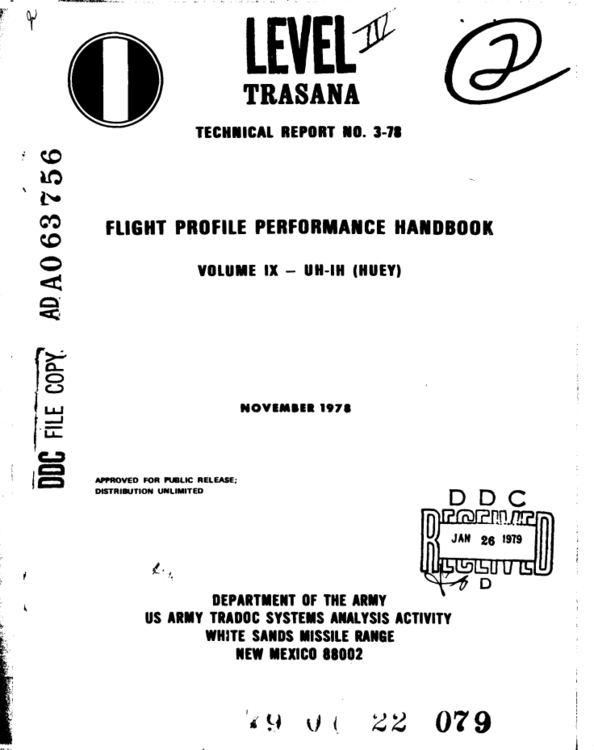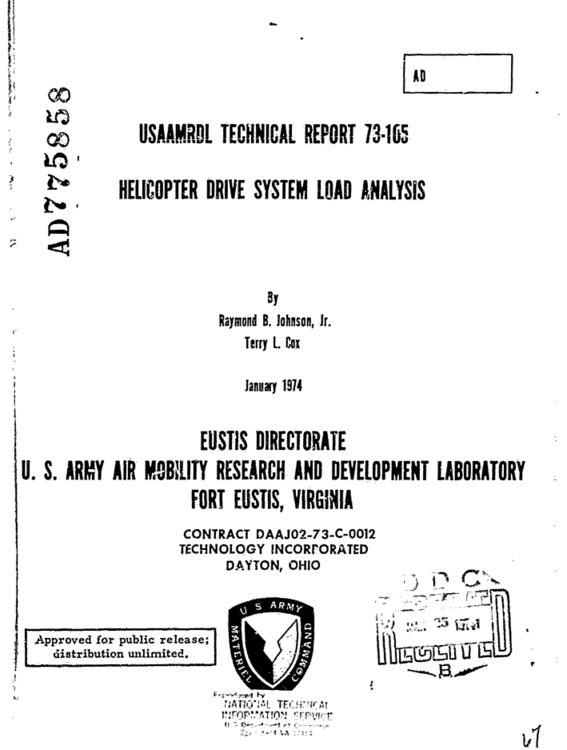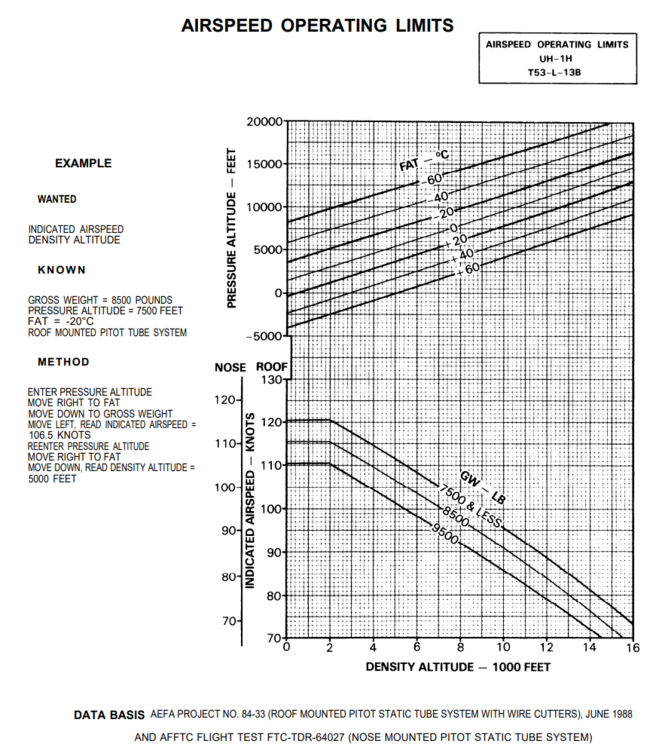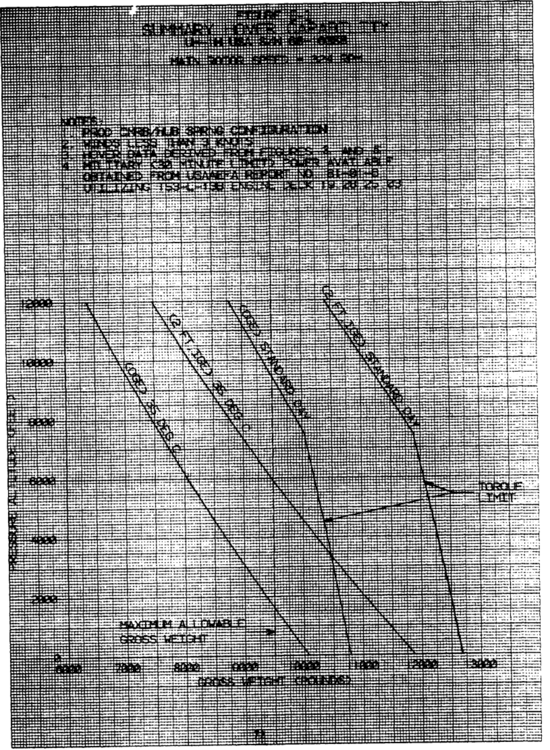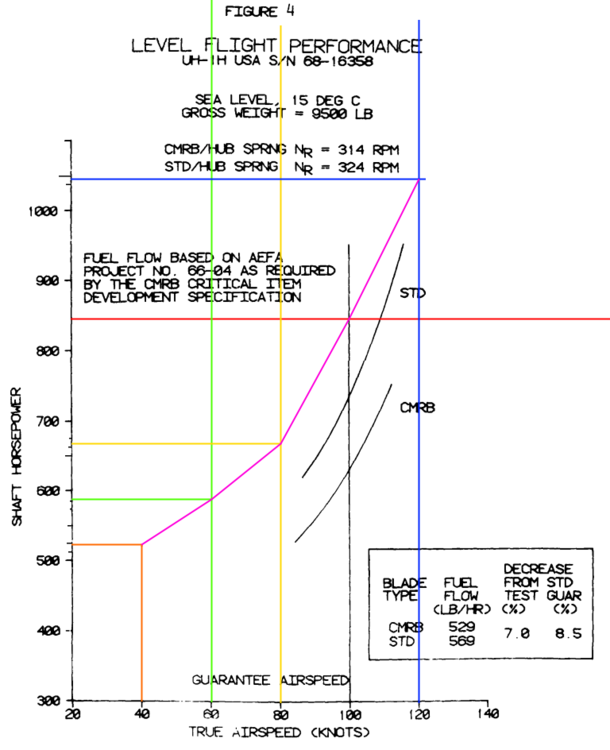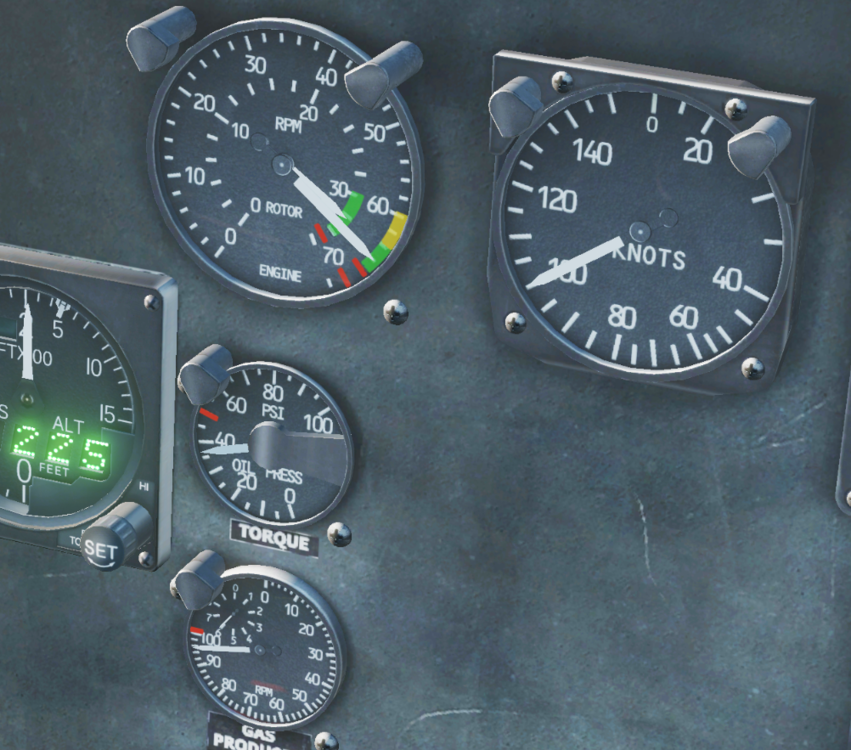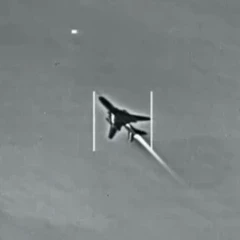Search the Community
Showing results for tags 'flight model'.
-
Hi, This thread is about the FCC OFP version 10.7 control logic implemented in DCS, and it's missing important features. Several observations (currently as of 2.9.4) show that a core function, which is described as 'Opposite Differential Stabilators for Roll', is not implemented. This function utilizes adverse yaw to generate yaw rate, enhancing roll coordination and performance at high AOA. A description of opposite diff-stab function, quoted from reference [2]: A description of the sluggish roll performance of v10.5.1, quoted from reference [1]: Video evidence of Opposite Differential Stabilators, from 0:42: This would be very useful in generating proverse yawing moment in the direction of intended yaw, increasing the yaw/sideslip maneuverability of the Hornet at elevated AOA, which is currently lacking in DCS. References: 1. Mitchell, Eric John, "F/A-18A-D Flight Control Computer OFP Versions 10.6.1 and 10.7 Developmental Flight Testing: Out-of-Controlled Flight Test Program Yields Reduced Falling Leaf Departure Susceptibility and Enhanced Aircraft Maneuverability. " Master's Thesis, University of Tennessee, 2004. https://trace.tennessee.edu/utk_gradthes/2372 2. Park, David J., "Development of F/A-18 Spin Departure Demonstration Procedure with Departure Resistant Flight Control Computer Version 10.7. " Master's Thesis, University of Tennessee, 2004. https://trace.tennessee.edu/utk_gradthes/2312 3. NATOPs manual which is not quoted here but contains relevant info.
- 2 replies
-
- 6
-

-

-
- fcs
- wip please read roadmap
-
(and 2 more)
Tagged with:
-
Currently in 2.9.2, whenever a sideslip is recreated by just rolling the aircraft at a speed around 400 knots, the rudder slaps hard to reduce the sideslip and results in a long-lasting yaw oscillation, as if yaw damping doesn't exist, which I found unacceptable from a handling quality point of view. According to section 9.1.3 Directional Auto Flap Up CAS from the NASA technical memorandum 'Simulation Model of a Twin-Tail, High Performance Airplane' (https://ntrs.nasa.gov/api/citations/19920024293/downloads/19920024293.pdf), the yaw rate (multiplied by cosine of angle of attack) feedback component is used to augment the Dutch roll damping. In the case of DCS, the oscillation is caused by the rudder itself, indicating either it is over-gained (system unstable/phase margin too low), or a wrong type of feedback (sideslip) is used according to another report https://forum.dcs.world/topic/338130-the-rudder-should-not-be-using-sideslip-feedback-for-yaw-dampening-causing-a-very-slow-yaw-response F18 yaw oscillation.trk
-
i noticed something very strange on all Flankers the can´t even pull 9 G turns at max something like 7.6- 7.9 G and and it doesn't matter without or with full weapons on the pylons. i only can achieve the 9 G with the ACS or Override control stick limitation button and that brakes the wings instand that seems odd to me that the flanker can´t pull 9G in a high speed turn and the F-15 for example can well exceed the 9Gs without a problem Flanker not even 9 G turn.trk F15 easy 9.5 G till blackout.trk Flanker high G turn.acmi
- 12 replies
-
After over a year of refinement, trial and error and learning from other flight model projects, I present to you the successor to my previous FM project. Basic External Flight Model (EFM) template! This is an enhanced version of the EFM template provided by Eagle Dynamics, with emphasis on simplicity and editability while also feeling smooth and believable. This FM template was designed to work "out of the box", designed like a two-engine subsonic trainer/fighter. What is included: Lift, drag, side, and thrust forces. Axis and discrete (keyboard) pitch, roll, and yaw controls with trim. Landing gear, flaps, slats, and air brakes. Engine startup/shutdown. Basic fuel draining system. Basic damage mechanics. Semi-realistic stalling, Dutch-rolling, and other oscillations. Infinite fuel and easy flight options. Example parameter to interface with the Lua environment. Lots of comments explaining how things work. The template itself and a pre-built .dll file can be found on GitHub! https://github.com/IGServal/DCS-Basic-EFM-Template Requirements: Microsoft Visual Studio (2019 was used to create this, but other versions might work as well). Basic understanding of C++, Lua, and flight physics. Feedback, bug reports, and suggestions are always appreciated!
- 12 replies
-
- 5
-

-

-
- flight model
- efm
-
(and 1 more)
Tagged with:
-
After several months of trial and error and learning from other flight model projects, I present to you: Serval's custom Flight Model mod! Credit goes to CptSmiley for creating the prototype F-16 FM that I edited to make this. You can find that here: What is this mod? Every player-controlled aircraft in DCS needs a flight model (FM) along with it. For a while, modders used the FMs from Flaming Cliffs 3 (FC3) aircraft for their mods. At some point last year, an update came along that made those files encrypted, leaving modders with the terrible default FM. The idea behind this mod was to create a flight model that imitates the Su-27/33 "game" flight mode behaviour used along with FC3 style cockpits for unofficial, community-made mods; as a replacement for the awkward and jittery default flight model (I seem to be one of a few people to notice how awful it is. see this post of mine for a demonstration of it: https://forums.eagle.ru/topic/264462-default-flight-model-is-awful-with-video-demonstration/?tab=comments#comment-4591944 ) I am not a programmer or aerodynamics expert; so I apologize if anything looks weird. Now, before I share the files, please read the following warning: DO NOT USE THIS MOD TO FLY OFFICIAL AIRCRAFT. BUY THE MODULES AND SUPPORT THE DEVELOPERS! The files can be found here: CustomFM mod v7.zip Here's the source code. It may take some time for me to update this after the main mod. Now you can fly smoothly without awkward jittering at high angles of attack! Have fun! Be sure to check the follow the instructions in the .README file and give feedback if you have any! Here's a few things that are still in the works: - Cockpit controls; as of now the stick, throttle, and rudder pedals don't move at all despite input. - Engine startup behaviour. - Autopilot. If you wish to integrate this into a mod and redistribute it, go ahead but please give credit to me and Cpt.Smiley. If you wish to modify the source code and re-release it under your name, you may do so; but again, please give credit. Version 2 changes: + Improved engine on/off logic. + Idle RPM is now 50% instead of 25%, afterburners now ignite at ~92% instead of ~85%. + Control surfaces now move smoothly. + Flaps (for aircraft that have them). + Digital or "keyboard" pitch and roll controls are faster. + Improved FBW stability and anti-stall logic, death spirals are now a lot less likely to happen. + Behaviour on the ground is now a bit more realistic, it now takes a bit longer to achieve takeoff speed (~300 Km/h). Version 3 changes: + Improved ground handling. + Smoother FBW stability. + Tail hook functionality (for planes that have one). + More realistic flap and air brake aerodynamics. Version 4 changes: + Reworked stability system, much improved dogfighting performance. + Improved afterburner thrust. + Corrected wheel positions and springs. + Cleaned up the source code, including more comments. Version 5 changes: + Autopilot! Sadly, no route-following mode (yet). + Damage modeling. Wings, tail, and engines have their own effects on flight behaviour when damaged. + Using wheel brakes no longer leaves skid marks. Version 6 changes: + Smooth engine startup and shutdown (at last!) + Slightly tweaked autopilot. + Stability system now behaves a bit more like the Mirage-2000 and MiG-29. + Controls are a bit more responsive, especially downwards pitch. + Pitch trim is slightly faster. + Flaps generate a bit more lift. + Fixed a bug where altitude and roll hold autopilot doesn't reset when restarting a mission. + Damage modeling has been tweaked and made (somewhat) more advanced. Version 7 changes: + Much stall recovery and post-stall behaviour, unrecoverable spins are pretty much impossible now. + Better analog roll control. + Slightly tweaked damage stuff. (ps: this is the first mod I have ever published!)
- 53 replies
-
- 7
-

-

-
- flightmodel
- fm
-
(and 1 more)
Tagged with:
-
Hi everyone, I've noticed that the HQ-16 SAM is behaving quite oddly: After burnout has occured, so long as the missile is unloaded, it will continue to accelerate (even in a climb). The HHQ-9 missile also suffers from this issue, though to an even more extreme degree. The missile continues to climb despite aiming downwards, even at fairly significant pitch angles (in excess of 15° below the horizon, even its rocket engine still firing). HQ-16_HPJ12_bug.trk
-
Just a minor bug in the CAT I Limiter. The blended AOA feedback bias used in the g-command system is not correct for the FLCS version we had. According to Figure 3.1 Longitudinal Control Block Diagram from the DTIC paper 'F-16 Simulator for Man-in-the-Loop Testing of Aircraft Control Systems (SIMTACS)' (https://apps.dtic.mil/sti/citations/ADA189675), the AOA bias used for an initial g-command reduction should be 15.8, but not 15.0 as currently is in DCS. This results in a lower AOA limit than expected. The figure is also backed up by the publicly available FLCS flashcard (https://quizlet.com/309832047/flcs-flash-cards/), which states that the G command system decreases available G when AOA > 15.8 (CAT I). The current 15.0 bias is seems to be used by a very old version of FLCS. 16CM g-command should not be reduced until 15.8 AOA.trk
-
Hello Could someone give me an idea of what the flight models in DCS "look like" and how they are integrated with the DCS engine. What are the inputs and outputs? What data from DCS are accessible for mods and what data is not? Are the FMs a set of equations with different inputs and outputs? Are the FMs a set of tabulated values for each possible flight case? Are they something else? I'd very much appreciate if examples could be provided either as screenshots, formulas or code. All answers are very much appreciated!
- 2 replies
-
- 1
-

-
- flightmodel
- flight model
-
(and 4 more)
Tagged with:
-
Heya all, I got hooked with the Mirage F1 lately, and I tried to do some stuff here and there. I understand that this is still early access and I found this module to be actually very nice and engaging (Both models) But - Is this flight model some kind of accurate right now? or is it planned to change significantly in the future. I am feeling it veeery heavy(Even naked with half fuel) - and i don't thing it can dogfight at it should be , it is very dead at low speed, and it should not be that much. What you think?
-
patches 2.7.4.9632 and 2.7.4.9847 have introduced various fixes and tweaks to controls, trim and FM. And for the most part they seem to have been very sucessfull (fe the problem with "overtrim" are far less and the sound feedback is also very helpfull). The Shaitan-Arba is now also much more controllable at low speeds. Especially noteworty in a positive way - VRS does no longer suddenly and fatally happen, the soundmapping for RBS, VRS, max-envelope aso is now a completely suitable indicator. What seems to need further attention is the following though: the feel of weight and mass now seems reduced, and the Hind is too twitchy in various envelopes (to the point where one seems to "stir" the cyclic aka the joystick) while hover transitions are now far more controllable the hover itself seems to have become very twitchy even in low-weight and zero stress conditions the wheels now "soapglide" even more in almost all terrains, even with collective on zero, rpm throttle down, and wheel brakes locked I have included a track from the remastered-for-hind huey-campaign (ty for that excellent scenario to really control the Hind @Bailey) where this can be seen. I also could directly compare the asset behaviour to before the patch (as I had just flown that mission before both patches). Twitchy hover: during takeoff at final landing at "Madrid" at the end "soapgliding" of wheels at rolling landing and taxi at Senaki-Kholki on the pad at "Madrid", with various test of AP channels, locked wheel brakes, applied wheel brakes, idle rpm, zero collective, diverse trimstates "rudder" (tailrotor), "heading" AP channel on/off slights osciallations during flight in stable envelope with no input entire flight various attitudes, crabbing during transition during speed hook or forward reduction notice zero control input (control input indicator up entire track) notice "pulse" inducing oscillation with slightest inputs as if input signal is registering on/off For the problems describe above, also notice how for the most part non-pilot induced oscillations seem rock stable while any attemopt to correct them with minor cylic, minor collective or general slight(test) peripheral input seem to surge the oscialltions or the twitchy hover behaviour (especially noticeable at the end of the track, when I almost crash myself at "Madrid"). The widely reported "overtrim" or "input overshoot when pressing trim" is reduced but still noticeable. For the passer-in-glancing, please focus on the bug behaviour, my bad flying is a given having to be seen as "baseline" . Trackfile as google-drive link as filesize exceeds attachment limit: https://drive.google.com/file/d/1u71lvSaImScYA2f3zgynpGPhEwe5roFX/view?usp=sharing Dxdiag file attached for good measure. DxDiag.txt
- 10 replies
-
- 1
-

-
All charts are sourced from SFI AJ 37 del 3, 1979 print. Test flights were flown in ISA, using weights as close as possible to those described for each loadout (remembering that the AJS is somewhat heavier than the AJ), either start weight or flight weight depending on what the chart in question described. LEVEL ACCELERATION Tests were run at 0km, 6km, and 11km in ISA conditions only. Each test included two runs (one by myself, one by Airhunter) with clean config/rent FPL. In addition, I ran a second set of 0km tests with a group 3 loadout (4x ARAK + XT), and 6km tests with a group 4 loadout (4x SB + XT). Two tests were run at 11km with the loadout stipulated in the manual, one by myself and one by Airhunter. Airhunter provided me with tacview files and graphs which I then charted against the manual (obviously only for the clean config 0km and 6km tests, and the 11km test). On my own end I forgot to save tacviews, but did save trackfiles, which are attached as well. The results show what I'd found myself: At sea level, mil thrust is maybe a touch slow to accelerate to M 0.9 but is still relatively close, and zone 3 is tuned almost on the dot. Zone 1 and 2 show discrepancies, particularly zone 1, although they aren't very large at this altitude. Excuse the rather unscientific graphs, but unfortunately just overlaying the ones from tacview wasn't really workable and I'm working with what I've got here: At 6km alt, mil thrust gradually diverges from the chart, ending up a little slower than expected. Zone 1 and 2 show large discrepancies. Zone 1 follows zone 2's curve, zone 2 follows zone 3's curve, and zone 3 is doing something else entirely. At 11km alt, only zone 3 was tested. The results were very far off the expectation: according to the chart, level acceleration from M 0.9 to M 1.6 should take about 5 minutes and 45 seconds. In the sim, this was achieved in just one minute (!), while acceleration from M 0.9 to M ~1.63 (as far as the line is drawn) should take about 7 minutes and 15 seconds, while in DCS it took 1 minute and 15 seconds. This is a very large discrepancy even compared to the aircraft's own charts, but also compared to acceleration profiles of other aircraft known to have phenomenal performance in this area (F-104, MiG-23, MiG-29). Something is clearly causing an issue here but I don't know what. Big thanks to Æck for spotting this one during a MP session and bringing it to light - I wouldn't have thought to test it otherwise. Finally for now, THRUST/DRAG EQUILIBRIUM SPEEDS AT SEA LEVEL This has been something I've been meaning to report for a while, but invariably by the time I got trackfiles, DCS would update and break them. As a result I'll just post the results of my testing now and drum up the trackfiles when I get time. Please note that this is separate to, but was compounded by, the now-fixed drag issues with Sidewinder launch rails. Each test was run using the circled loadout group from the AJ 37 loadout tables - so rent FPL was clean, group 1 was KA-24-XT-24-KB, group 2 was KA-24-XT-blank-04, group 3 was RA-RA-XT-RA-RA, group 4 was SB-SB-XT-SB-SB. All loadouts except group 4 (bombs) reach thrust/drag equilibrium above the intercept of MAX ZON 3 lines and thrust/drag lines, some significantly so. Group 4 is slightly slower than expected, the clean airframe flies beyond even SAAB's estimate for a world speed record using a stripped and polished modified aircraft, groups 1 and 2 are beyond the aircraft's Vne and fall off the chart, and group 3 (which should be the slowest according to the chart - just barely subsonic, likely due to the rocket pods generating enormous amounts of transonic drag compared to anything else tested) is sitting slightly above the aircraft's Vne. It seems drag values need looking at. I don't have trackfiles handy for these tests (the ones I did have are now several DCS patches old), but I do have tacviews for them. I can get tracks again if necessary. I haven't checked climb performance yet, but hopefully there won't be anything to add for that. OWN TRACKFILES.zip Tacviews from Airhunter.zip drag tests.zip
- 23 replies
-
- 21
-

-

-
- drag
- flight model
-
(and 4 more)
Tagged with:
-
When I do researches on F-5E tiger's Landing video records, I found most of the "tigers" will do a nose up Aerodynamic Braking, in this video the voice over said 10 degrees (?) But I found it's really hard to do it in DCS, even I tried to touch down very Gently, the nose gear will "Strike to the floor" within 2 seconds, just like there is a force that pulling it down. ( I double/hundred checked my brakes are off ),TRACK INCLUDED DOWN BELOW , but yet I'm not a professional, and I'm lack of documents to proof it further, maybe you the one can provide a little help. PS. the F-5E must need moooooore LOVE F5LAND.trk
- 18 replies
-
- 8
-

-
- f5e
- aerodynamics
-
(and 6 more)
Tagged with:
-
Hi there, my question is kinda self-explanatory. I am a bit out of the loop regarding the F-16 flight model improvements. I believe there were *some* adjustments made in the second half of 2021, though I do not remember how significant those were. So, are more changes to the FM to be expected in 2022 or does ED consider the work on the F-16's FM to be fully complete by now? I am asking because I was surprised of how easily every single modern jet manages to get on my 6 in both 1 and 2 circle dogfights. I know the Viper is considered to be a great ratefighter (2C) and I *think* I am doing everything right, especially maintaining my speed, around 420-440kn in a sustained turn, yet I get killed over and over. I am by no means the best dogfighter, but frankly, neither are my friends, yet I always end up on the losing side whenever they get inside something different than an F-16. This is why I decided to ask here, hoping that someone more experienced would clear things up, as well as getting some info on the state of the Viper's flight model accuracy. Any feedback is appreciated!
- 1 reply
-
- f-16
- flight model
-
(and 3 more)
Tagged with:
-
At some point in 2020, an update came along and made FC3 FM stuff encrypted, so now modders have to either create their own flight model (If you have a guide or tutorial to help do that, that would be great); or resort to the default "nil" flight model, which is called SFM? This flight model is terrible. It just feels to sticky, jittery, awkward and disorienting (especially in VR). Dogfights are just awkward and pretty much impossible (for me) without invulnerability. I made a video that attempts to show some of this weird behaviour especially with rolling, stalling, and high angle-of-attack maneuvers. The only mod I've seen with a custom flight model is Freebirddz' pretty good Su-30 mod, available here: If the embedded video doesn't work, here's the link: https://youtu.be/ICSDFUNydQo If would be great if Eagle Dynamics would improve this default flight model or provide documentation or guides for creating a custom flight model. Both would be fantastic. (side note: I'm experimenting with the creation of a custom flight model. If you got any ideas, feel free to share on this forum post of mine: https://forums.eagle.ru/topic/264171-are-there-any-guides-or-tutorials-for-making-a-custom-flight-model/?tab=comments#comment-4588513 )
- 3 replies
-
- default fm
- flight model
-
(and 1 more)
Tagged with:
-
I'm experimenting with the creation of a custom flight model. I got the FM template, but I can't find any tutorials or guides on how to implement all the functions into DCS. By "functions" I mostly mean engine control (throttle), landing gear, flaps, etc. However, pitch, roll, and yaw with trimming work just fine out of the box.
- 4 replies
-
- fm
- flight model
-
(and 1 more)
Tagged with:
-
My experience is with the P-51D but probably applies to all the tailwheels. I would like to see DCS improve the flight model particularly for when the plane is on the runway both taking off and landing. The plane does wild yaws that are very unrealistic. I understand about torque and ground loops and such but planes don't travel down the runway sideways in real life. The amount that the plane can yaw before it stalls or has a wing strike needs to be more limited.
- 51 replies
-
- 1
-

-
- ground loop
- yaw
-
(and 2 more)
Tagged with:
-
To put the TLDR first, our huey is underperforming by 3400lbs while being provided a lower available power than the real thing, and made slower than it's actually supposed to be at low altitude (which is where it normally operates) So what are my sources? Before that, lets start with a very simple summary of HOW WRONG the module's performance actually is. null Now, I won't act like that's the whole story with all the context, because it's definitely not. There are things like the transmission limit to take into account. But those sources, lets see them. Here are the 3 main sources, there are several other minor sources as well, however the majority of the data comes from these 3 documents. null So allow me to clarify something, our huey is one with a 1990s refit, it is the one with composite blades. You may have noticed, one of those sources explicitly mentions the composite blades in the title. That source is a performance profiling of our exact model of huey. Refits and all. Now, there's something else to talk about, the huey's operations manual. You might be familiar with this chart. This chart is useless. This chart doesn't tell us where the transmission limit is, it doesn't tell us how much engine power is being used to generate those speeds, it doesn't tell us ANYTHING. That chart is a significant misrepresentation of the huey's performance capabilities, because all that chart shows is a paper limit on the huey's speed. Vne, Velocity, never exceed. A scary term, used to define a speed you are to not exceed for assorted reasons. For the huey, the Vne is in place to keep the pilots from accelerating into retreating blade stall, nothing more. It's a paper limit to keep the pilots safe, it tells us NOTHING about how the aircraft performs. However, if you look at the bottom of that chart, "Data basis AEFA Project No. 84-33" Go back and look at top of the source that mentions the composite blades, that is AEFA Project No. 84-33. The data from that document was used to generate that chart in the manual. So before we go farther, how do we corroborate all our sources to make sure they're on the same page and providing us valid information. Cross checking. Take one set of data, and see if the patterns within it match the patterns in another set of data. We can do that. Here is the overall performance of a huey with the standard blades at 7,500lbs, derived from the data within the UH-1H flight profile performance handbook. Pay attention to the density altitude of 7500ft, you see where the yellow and red (transmission limit and power limit) lines intersect, that is where the engine can no longer provide enough power to max out the transmission. Now here is the hover performance chart from the composite blade document. Look at the rightmost line. "2ft IGE, standard day". You might have already noticed it. Incase you didn't. So our documents are in agreement, what do we do with this information? We start comparing it to the performance of our huey in DCS. Lets start with a more complete performance profiling of the real huey with the standard blades, once again, this data is derived from the UH-1H flight profile performance handbook. This data is for a huey with non composite blades. So there are multiple plots here, let me walk you through them. The first one that likely sticks out is the blue line since it's away from all the others, that is the Vne. The fact that it is placed lower than all the other data reminds us of the chart in the manual. I said that chart was useless, because as you can see by this graph, every single other plot of data performs significantly over what the Vne would have you believe. The next two that likely stick out are the red and teal lines. These are the performance of the DCS huey plotted onto the same graph, the red line abides by the incorrect EGT limit placed upon the module, the teal line ignores said limit and properly maxes out the transmission where it can. Next would be the green and yellow lines, the green line shows the maximum power the engine can normally push, regardless of any other factor, at sea level that would be 1340shp. The yellow line shows the maximum CONTINUOUS power the engine can push. This means the engine can run at this power setting indefinitely without much issue. And finally, the orange line, this line shows the safe limit of the transmission, specifically, 1158shp, or 50psi on the torque indicator. This is the huey's military thrust it can use this power for 30 minutes. This is not the LIMIT of the aircraft's performance, the transmission CAN PUSH HARDER, it just does so at the risk of being damaged. Yes, this means that, per this data, the huey should be able to reach 141knots in level flight. Something you'll notice, the teal line, our huey's performance, can't even reach the transmission limit at sea level. While, conversely, our huey's performance actually PASSES the real huey's maximum possible performance at higher altitudes. So, from this alone, you can see that the module's performance accuracy is not great. But that's not the whole story, that's just for the standard huey, and we haven't even gotten into engine performance per speed yet. We'll do that now. Here is a chart from the composite blade document, it shows the level flight performance in speed compared to the shaft horsepower generated by the engine to achieve said speed at a gross weight of 9500lbs at sea level in 15C temperature air, ISA conditions. On it, you will see a pink data plot. That is our huey measured by the same metric. 9500lbs, Sea level, 15C air temperature, ISA conditions. You'll notice that our huey isn't even performing as well as the huey with the standard blades, let alone the one with the composite blades. But first, how did I get the horsepwer data from the DCS huey, we don't have access to that data. Except we do. We are given the torquemeter, which when combined with the rotor RPM, we can derive the current SHP put out by the engine. As per our previously unreferenced source "Helicopter drive system load analysis". Pages 43-44 detail a formula to do exactly that, derive shaft horsepower from our torquemeter reading, and rotor RPM. Here is that formula. SHP=3.88*((10^-3*Rotor RPM)*((17.76*Torquemeter Torque)+33.33)) Now, you'll notice that graph shows the composite blades as being measured with the rotor at 314rpm, that's ok the difference in the result isn't exceptional, however here is a table showing the same data and including 324rpm on the composite blades. So, 639shp to push the helicopter to 100knots at sea level at 15C at a gross weight of 9500lbs. That would be 26.745psi on the torque indicator in the cockpit. As you can see by the pink line on the graph, however, we didn't even get close. We hit 36, possibly 37psi on the torque indicator at those parameters. Level flight, 9500lbs, sea level, 15C, 100knots. 36psi at 324rotor rpm, as per the formula, is about 845shp, over 200shp too high. Now, we can use this formula to find something dire. Lets make the huey as light as we can and see how it performs. 6100lbs, all it has is about 9 minutes of fuel Sea level 15C 100knots level flight about 30.5psi in those parameters. 722.8shp at 100knots. The real huey pulls 639shp in those parameters at 9500lbs. Our huey, at 6100lbs, is performing WORSE than the real huey at 9500lbs. Our huey is underperforming by over 3400lbs at low altitude. That is unacceptable. Interestingly, these high torque values also explain why we need an unrealistic amount of left pedal, which when combined with the incorrectly modeled tail rotor, brings about some interesting comparisons. So, now that we have the well documented performance profile from the standard blade huey, honestly, we could just use that one for our huey and it would be fine, the overall speed differences shouldn't be drastic, it'd be far more accurate than what we have now. As for why our huey overperforms so much at high altitude, I don't know. All my efforts were aimed at understanding its performance at low altitude as that's generally where players utilize the aircraft. I suspect it may be a combination of the engine not losing enough power at altitude and rotor mach drag not being modeled. However, for now, I believe this should be sufficient to warrant the developers looking at it. Please. Properly implemented, our torque indicator should actually max out at around 58.15psi while the N1% (gas producer) gauge reads 100% As it stands, we are using too much power, to generate too little speed, at too high of an EGT, causing us to have even less power. We are underperforming by over 3400lbs at sea level, it needs to change.
- 46 replies
-
- 38
-

-

-
- uh-1h
- performance
-
(and 1 more)
Tagged with:
-
I have spent a multitude of hours researching how I can try to edit the avionics and flight model of the CJS Super Hornet. Alas, I have had little to no success. I’m at a loss right now, and I would really appreciate some help. I know little to nothing about coding or computers, so this is all very confusing to me. From all my research, I found that the player flight model for the hornet (also used by the CJS Super Hornet) is a professional flight model. This PFM is a .DLL file and is encrypted. I heard the avionics are also encrypted (probably also in a DLL file [i never found it so I wouldn’t know]). Can someone help? I got DCS for my 15th birthday in July, and I found the Super Hornet a while ago. I just really want to make the flight model more like a Super Hornet. If someone knows how to edit these DLL files(idk if that’s legal. Is it?) please teach me. Or maybe if someone knows how, you could edit it for me I suppose? Maybe a developer could help me, someone with knowledge and authorization? Please, I just really want this. I know the Hornet and Super Hornet are really similar, but I love the little details. I love small changes that make each aircraft different, even if it’s two variants of the same aircraft. I love dogfighting, and I’ve heard of the AoA and slow speed performance of the Super Hornet being even better than the Legacy Hornet. I’d love to experience that. I don’t intend to sell or pirate the DLL files or anything. I know they took years of research and development, and I deeply revere that dedication. I would never steal that work. I’m not trying to pay anyone for this, and I don’t expect someone to help. I’m not entitled to help. However, I just wanted to reach out and see if I can find the right person who wants to help me. All I want is to fly the Super Hornet with my little brother and my friend. Please help, I’m out of ideas. Also, if anyone does help, here are the changes I would love to see: Decreased RCS to around 0.1-0.5 m2 (I think it’s in the .lua but I’ll put it in just to be safe) Increased radar detection range. (The AN/APG-73 did 60nm, but the AN/APG-79 does 80nm; I can detect a plane sooner than Legacy Hornet can) More consistent Radar STT lock (DCS Legacy Hornet loses STT lock a lot; appears to almost be intermittent at times) Increased thrust (to emulate increased subsonic acceleration) Better AoA performance (Legacy Hornet flew at max 35o AoA; Super Hornet allegedly has higher max AoA; 20% better seems like a good estimate) Increased lift (Better slow speed characteristics; more control at low speeds; 20% better seems good) Increased pitch rate (Nose pitches up or down quicker and with more control; maybe 7o faster) Increased survivable G load (requires higher G-force to break wings off airframe) (If I over-explained, I’m sorry. I just don’t know if I used the right aviation terms and want to make sure I’m understood properly)
-
One of the folks in our squad (Royal Waffles) found this...you can load bombs, then take off WITHOUT adding them to PACS (A2G Armament) and the jet will fly as if it is clean (achieving M1.5+), then while in flight, if you add the bombs to PACS, the jet will suddenly slow down, which suggests that the drag of the bombs is not modeled until they are identified in the armament page. This video shows the F-15E at M1.53, then when the CBUs/etc are entered into the armament page, the speed begins to decrease without any adjustment to the throttle. This can be exploited by flying to the AO "drag free", then entering the armament just before attacking, saving fuel/etc.
- 2 replies
-
- 5
-

-

-
- drag
- flight model
-
(and 1 more)
Tagged with:


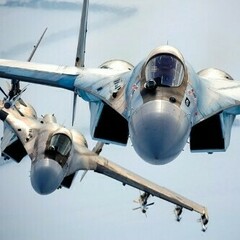
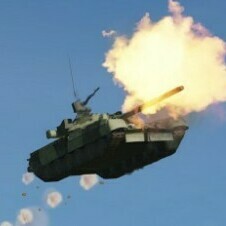


.thumb.jpg.33aab815740c9891f93c0e0ee2c18a5c.jpg)
